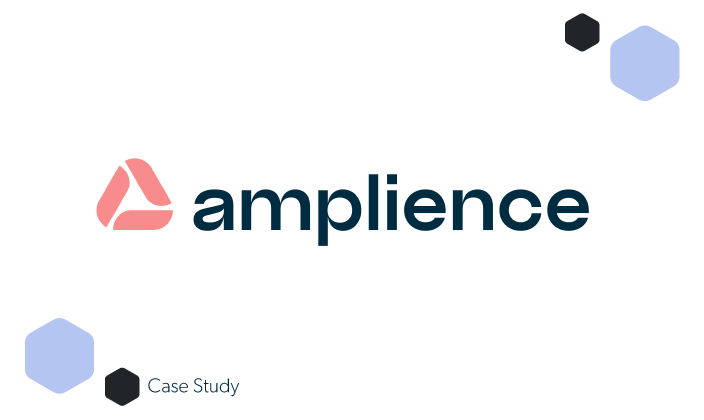Amplience is an AI content company that combines data, performance insights, and generative AI to help some of the world’s most impactful brands deliver highly engaging shopping experiences. Founded in 2008 and headquartered in London, the company — which has roughly 150 employees — has raised $180 million to date.
Looking to centralize identity & device management
As Amplience continued to scale, the company started exploring ways to bake more efficiency into its IT operations.
While Amplience is primarily a Mac shop, it also uses Windows and Linux devices. At the time, the company — which has a hybrid IT environment that includes both cloud and on-premises resources — was using both Jamf and Azure Entra for directory services.
We were interested in JumpCloud because of its integration capabilities and how it was a mature solution.
Sunil Virk
“We were looking to centralize identity and device management and enhance the onboarding process,” says Sunil Virk, who leads a team that manages IT infrastructure, security, and daily operations at Amplience. “Jamf and Microsoft weren’t working in tandem together, and we wanted to change that.”
Choosing feature-rich JumpCloud for integration capabilities & controls
After searching for a solution to their problem, the Amplience team came across JumpCloud, the unified identity, device, and access management platform.
“We were interested in JumpCloud because of its integration capabilities and how it was a mature solution,” Sunil explains, adding that they were particularly impressed by how JumpCloud seamlessly integrated with the company’s HR system and Apple DEP.
Liking what they saw, the Amplience team decided that JumpCloud was the ideal solution to their disparate directory services problem.
“JumpCloud has streamlined these services into a single management point,” Sunil continues.
Shoring up security & unlocking more and more value from JumpCloud
JumpCloud solved Amplience’s immediate problem, and as time goes on, the team continues to leverage more and more of the platform’s feature-rich nature. Today, Sunil manages 140 applications through JumpCloud.
We use conditional policies for applications that need more security — just an additional layer of MFA to protect the application.
Sunil Virk
To shore up security, Amplience is also using JumpCloud’s LDAP for secure storage access and RADIUS to control secure WiFi access, along with single sign-on (SSO) and multi-factor authentication (MFA) capabilities through JumpCloud Protect.
“We use conditional policies for applications that need more security — just an additional layer of MFA to protect the application,” Sunil says. “We also use JumpCloud Go™ — I love it. It’s a lot more seamless; a user just logs in. It’s not more password prompts, which is really nice. It makes it a bit easier for us to get on with day-to-day work.”
Streamlined onboarding and offboarding
With automated onboarding and offboarding capabilities, JumpCloud has made life easier for Amplience’s IT team.
“We were particularly impressed by JumpCloud’s native capabilities with Apple DEP and our HR system,” Sunil says. “We can have the MacBook delivered to the end user and all they have to do is open it up. Integrating our HR system with the JumpCloud directory streamlines the user creation flow. Once the user is active in the HR system, that feeds to JumpCloud and creates the user automatically. All I do is activate them and send them an email. Then the user logs in using JumpCloud credentials and they’re good to go. It’s literally that simple. We’ve got our onboarding process pretty much down to zero-touch now.”
Using policies and groups, the users are then automatically granted access to relevant applications — like Slack and the Microsoft suite — without IT having to intervene.
We are spending minimum resources on onboarding. It’s a lot of time saved for us. That’s definitely something to rave about.
Sunil Virk
Compliance
Using JumpCloud, Amplience has been able to maintain SOC 2 compliance with user groups and role-based access controls.
“When we have to onboard or offboard users, we just kind of gather the data. This user is part of this group, this is what permissions they have, and we’re good to go,” Sunil continues. “So from a compliance point of view, it’s quite easy.”
Policies and Groups
Amplience also leverages JumpCloud’s policies and group capabilities to streamline IT management and protect resources.
“We have a policy that prevents users from applying the latest upgrade right away in case there are any issues,” Sunil explains. “We have device groups, with policies associated with each of them, and we can pick and choose what applications and machines we want in each group. If we don’t want our MacBooks riding out to QA, for example, we’d isolate them. We also have application-based groups.”
Additionally, the company is using dynamic user groups.
Dynamic groups are great, and I’m going to be doing more of that.
Sunil Virk
“We’ve got dynamic groups for Slack and Office 365,” Sunil says. “If certain criteria is met, it automatically adds the user into applications — like if the user is active and the user department equals operations, for example. That’s pretty cool. It will dynamically put the user into that group. And it works backwards as well when the user changes roles or leaves; it automatically takes them out. We don’t have to worry about deprovisioning or anything along those lines. Dynamic groups are great, and I’m going to be doing more of that.”
Commands
Amplience is utilizing both out-of-the-box JumpCloud commands as well as custom commands.
“There’s a lot of stuff in the JumpCloud Library that is really useful,” Sunil explains. “We also use our own commands to push applications. For example, there are certain applications that we have hosted in AWS, and we go ahead and just create a script to remotely deploy them, which is really cool.”
Testing features early
Amplience is participating in JumpCloud Early Access, a program that lets customers test beta versions of new features and share feedback.
It’s definitely helpful. It gives us insight into things before they become fully fledged features, which gives us a better understanding of the tool.
Sunil Virk
Looking ahead, Sunil and his team are exploring JumpCloud’s zero-trust, patch management, and Password Manager features to improve security and optimize IT spend.
“JumpCloud is constantly changing and improving, which is lovely,” Sunil says. “New features are being added all the time, which definitely helps us.”
Sunil recommends JumpCloud to any organization looking to centralize identity and device management, particularly if they want to automate onboarding and offboarding and improve security.
“It’s really seamless, it’s really smooth,” Sunil says. “The capabilities for security enhancement, onboarding, offboarding, time saving, and just efficiency — I fully, fully recommend using JumpCloud.”
About JumpCloud
JumpCloud® delivers a unified open directory platform that makes it easy to securely manage identities, devices, and access across your organization. With JumpCloud, IT teams and MSPs enable users to work securely from anywhere and manage their Windows, Apple, Linux, and Android devices from a single platform.
To see the power of JumpCloud yourself, request a demo or start a 30-day trial today.

